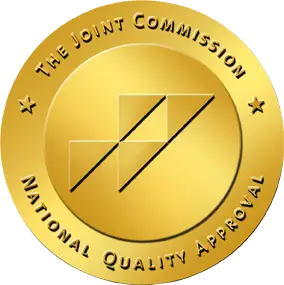What Is A Sober Living Home?
Sober living homes are residential facilities designed to support individuals transitioning from substance abuse treatment or a period of active addiction into independent, substance-free living. These homes provide a structured and supportive environment for people at various stages of their recovery journey. Unlike inpatient treatment centers, sober living homes allow residents to attend work, school, or other community activities while still benefiting from a supportive framework that helps reinforce accountability and abstinence.
The concept behind sober living is simple: an individual in recovery can live in a place free from substances, surrounded by peers who share a commitment to sobriety. In doing so, they gain a solid foundation and learn essential life skills, such as budgeting, meal planning, and time management — all within a sober context. This continued structure and routine can be a major difference-maker for people who’ve recently completed detox or rehabilitation programs and need a safe, substance-free space to bridge the gap between inpatient care and full autonomy.
Sober Living Homes vs. Halfway Houses: What Is the Difference?
While both sober living homes and halfway houses support individuals in early recovery, there are key differences between the two:
- Funding and Ownership: Halfway houses are often state-funded or run by government agencies, and they frequently cater to individuals mandated by the legal system. In contrast, sober living homes are typically privately owned or managed by charities or nonprofits, meaning rules, costs, and admissions criteria can vary.
- Length of Stay: Halfway houses usually have a fixed or limited length of stay and operate under a more rigid structure, often requiring residents to adhere to a government-approved treatment or work schedule. Sober living homes generally offer more flexibility, allowing residents to remain as long as they need, provided they continue to meet house rules, remain sober, and fulfill their share of responsibilities.
- Privacy and Amenities: Because sober living homes are usually privately operated, they may offer more amenities and a more comfortable living environment. Halfway houses can be more institutional in feel, with less privacy and fewer creature comforts.
- Admission Requirements: Halfway houses often serve people coming out of incarceration or court-mandated treatment programs. Sober living homes are usually open to a broader range of individuals, including those who have voluntarily sought treatment or just completed rehab.
Ultimately, the choice between a sober living home and a halfway house depends on a person’s specific circumstances, legal obligations, financial resources, and the type of supportive environment they need.
This Season, Give Yourself the Gift of a Fresh Start.
Whether you are struggling with addiction, mental health or both, our expert team is here to guide you every step of the way. Don’t wait— reach out today to take the first step toward taking control of your life.
How Does Sober Living Work?
Sober living homes create an environment where each resident is accountable for maintaining sobriety and fulfilling set responsibilities. However, not every sober living home is the same. According to the National Alliance for Recovery Residences, there are four primary levels or categories of recovery residences, each with varying degrees of support and structure:
Level One
Level one residences are peer-run homes with minimal structure. Residents manage their own day-to-day activities, splitting household tasks like cooking and cleaning. There is typically no paid staff on-site, though there might be a house manager or senior resident who helps maintain order. A level one home might be most suitable for someone further along in recovery who has already established stable sobriety and needs only minimal oversight or guidance.
Level Two
Level two residences introduce a bit more structure while still emphasizing peer support. In these homes, there may be a house manager or supervisor who enforces house rules and coordinates group activities or house meetings. Residents are encouraged to attend 12-step meetings or other support groups, and they may receive life skills training or regular check-ins with professionals. Level two still emphasizes autonomy but provides clearer guidelines for behavior and accountability.
Level Three
Level three residences feature a more robust level of professional involvement. Residents might have access to on-site counseling services, group therapy, or clinical staff. These homes often require adherence to a structured schedule, which could include regular therapy sessions, group meetings, and mandatory recovery-oriented activities. In addition to life skills training, there may be employment assistance, education planning, or referral to outside support services. This level of care is often chosen by individuals who need consistent oversight and integrated recovery services.
Level Four
Level four residences closely resemble a treatment center environment. They provide a highly structured setting with credentialed staff — including therapists, social workers, case managers, or medical professionals — offering full-scale therapeutic services, programming, and activities. The goal of level four is to provide comprehensive, integrated support. While this may feel similar to an inpatient treatment program, the environment remains residential and community-oriented rather than institutional.
Regardless of the level, the core principle is the same: sober living homes help residents maintain an alcohol- and drug-free lifestyle in an environment that promotes ongoing growth, mutual support, and accountability.
Benefits of Sober Living
Sober living can offer multiple advantages for people in recovery:
- Structured Support: Having clear guidelines, curfews, chores, and sober routines can help someone newly in recovery remain focused on healing and personal growth.
- Peer Accountability: Living with others who share the same sobriety goals can foster a sense of community and mutual responsibility. It’s often helpful to see firsthand how others handle triggers and stressful situations without resorting to substance use.
- Personal Development: In many sober living homes, residents learn or reinforce essential life skills like cooking, budgeting, and job hunting. This practical skill-building can be crucial as they transition toward independence.
- Relapse Prevention: The sober community environment can deter relapse by removing access to addictive substances and promoting healthy alternatives. Residents also have immediate support if they experience cravings or feel vulnerable.
- Transition to Independence: After leaving an inpatient or intensive outpatient program, the jump to living completely alone can be jarring. A sober living home serves as a middle ground, bridging the gap between strict treatment settings and complete freedom.
- Strong Recovery Network: Friendships formed in sober living often last long after a person moves on. These connections can become an integral part of a sustained support network, helping maintain sobriety in the long term.
Common Rules of Sober Living
While rules vary from house to house, most sober living homes share some common expectations:
- Sobriety: Residents must remain abstinent from drugs and alcohol, often confirmed through regular or random drug tests.
- House Chores: Each resident typically shares responsibilities like cooking, cleaning, or grocery shopping to maintain a clean, orderly environment.
- Curfews and Meeting Attendance: Many homes enforce curfews to encourage routine and responsible time management. Attendance at house meetings or 12-step groups is commonly required.
- No Violence or Harassment: Safety is a priority. Physical or verbal abuse, as well as disruptive behavior, is not tolerated.
- Paying Rent: Residents usually must pay rent, which may be weekly or monthly, and contribute toward utilities.
- Respecting Privacy: While sober living fosters a community environment, homes also promote respect for personal space and belongings. Violations of privacy can lead to eviction.
- Ongoing Recovery Support: Some homes require proof of continued treatment, counseling, or support group attendance, reinforcing a commitment to sobriety.
Consequences for breaking these rules depend on the house. Some violations may be resolved through an internal process (e.g., a house meeting), while others can lead to immediate eviction, especially if it involves substance use.
How Much Do Sober Living Homes Cost?
The cost of sober living homes varies widely depending on factors like location, house amenities, and the level of services provided:
- Geographical Location: Big cities or areas with higher living costs may have more expensive rent. However, they may also offer a greater variety of sober living options, catering to different budget ranges.
- Amenities and Services: Homes that include on-site counseling, meals, or specialized programs may charge more. Similarly, level three or level four residences — which offer more comprehensive support — are likely to have higher fees.
- Length of Stay: While there isn’t a strict timeline for how long someone can stay in a sober living home, it’s often recommended to stay for at least several months to solidify new routines and healthy habits. Some houses may offer reduced rates for longer commitments.
Some individuals may cover costs with insurance benefits if their plan covers extended aftercare or residential support. Others pay out of pocket, and a few houses may offer sliding scale fees based on income. It’s important to remember that investing in a supportive and stable environment can pay dividends in sustained sobriety and personal development.
Outcomes of Sober Living
Research consistently points to the effectiveness of sober living homes in improving long-term recovery outcomes. Studies show that individuals who spend time in structured sober living environments after completing a formal treatment program have a lower likelihood of relapse and a greater sense of overall well-being. Key factors that contribute to these positive outcomes include:
- Community and Connection: Feeling connected to peers helps combat the isolation that often contributes to relapse.
- Consistent Routine: Having a schedule and expectations can reduce idle time and encourage healthier habits.
- Reduced Exposure to Triggers: Living in an environment where drug or alcohol use is strictly prohibited mitigates many high-risk triggers.
- Ongoing Support: Access to counseling, peer-led groups, and mentorship reduces the fear and frustration that can arise during the post-treatment phase.
For many, sober living is a key step in establishing a solid recovery foundation, and the benefits can resonate well beyond the time they spend in the home itself.
Who Should Consider a Sober Living Home?
Almost anyone in recovery who desires a supportive, drug-free environment can benefit from sober living. However, it’s particularly useful for:
- Individuals Just Leaving Rehab: Transitioning from a highly structured environment to full independence can be overwhelming. Sober living provides a gradual step-down.
- People with Unstable Home Environments: If someone’s home environment involves substance use or other triggers, a sober living facility offers the safety and stability needed to continue healing.
- Those Seeking Community Support: Isolation can feed addiction. People who thrive in group settings where they can share experiences and learn from others may find sober living indispensable.
- Early Recovery Vulnerabilities: Sober living can be an excellent fit for those who have had multiple relapses and need a stronger safety net.
- Building Life Skills: If someone needs help learning basic life skills, developing healthy routines, and establishing financial stability, sober living offers built-in structure and guidance.
There is no one-size-fits-all approach to recovery. Many people have success in different types of programs or living situations. The crucial point is that a sober living home can offer a vital, supportive environment with accountability, guidance, and a community dedicated to long-term sobriety.
Choosing the Right Sober Home
If you’re considering a sober living home, selecting a quality facility that meets your needs is important. It’s helpful to look for the following features in a sober living facility:
- Rules that require residents to remain drug-free.
- Residents are provided with access to support group meetings.
- There are clear policies in place related to chores, monthly fees and the use of common living areas.
- The sober home has received some sort of professional certification or accreditation.
If you’re having trouble finding sober living, it can be helpful to talk to your addiction treatment provider about resources in your area.
Learn more about our addiction treatment programs and transitional living today.








